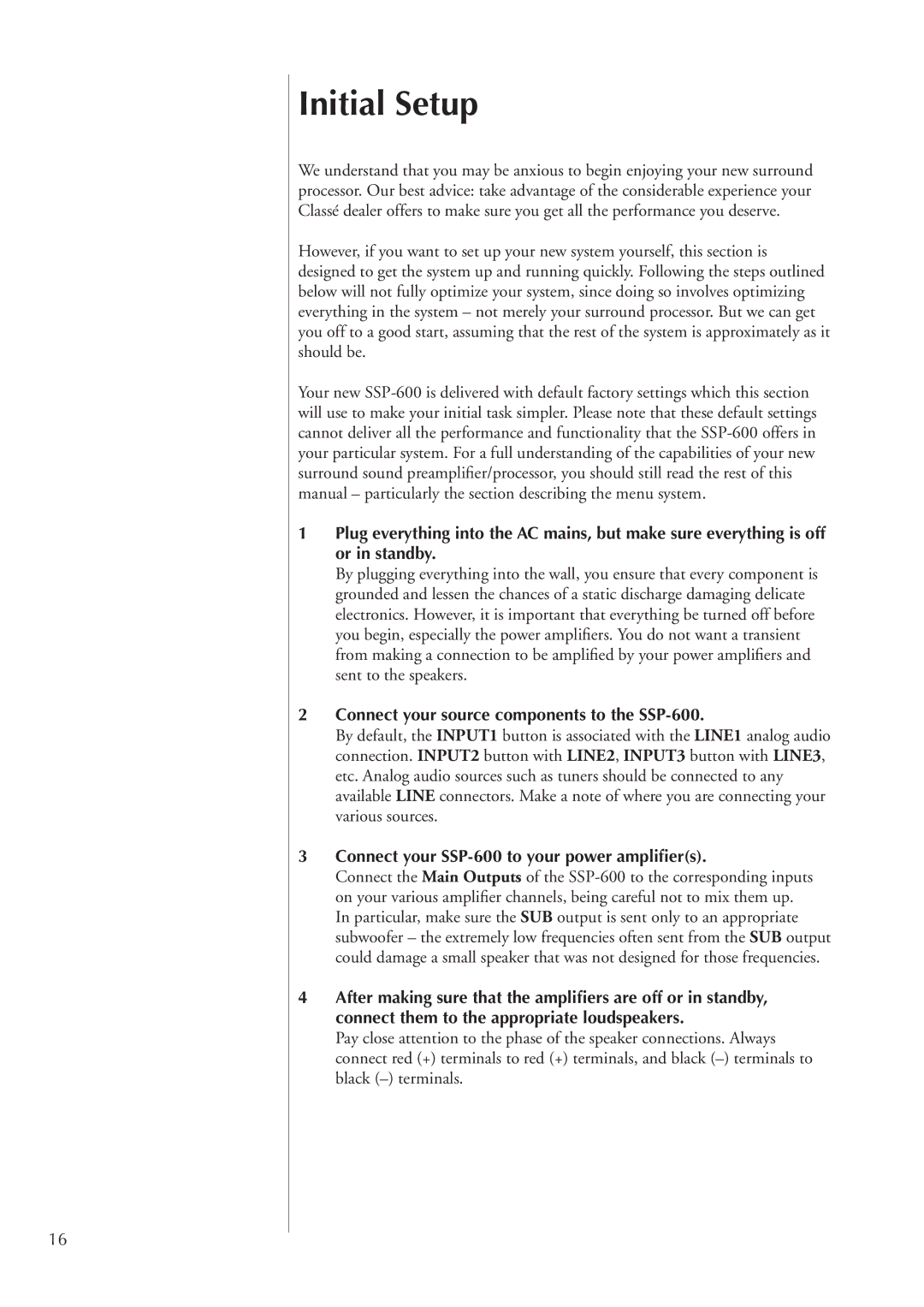16
Initial Setup
We understand that you may be anxious to begin enjoying your new surround processor. Our best advice: take advantage of the considerable experience your Classé dealer offers to make sure you get all the performance you deserve.
However, if you want to set up your new system yourself, this section is designed to get the system up and running quickly. Following the steps outlined below will not fully optimize your system, since doing so involves optimizing everything in the system – not merely your surround processor. But we can get you off to a good start, assuming that the rest of the system is approximately as it should be.
Your new
1Plug everything into the AC mains, but make sure everything is off or in standby.
By plugging everything into the wall, you ensure that every component is grounded and lessen the chances of a static discharge damaging delicate electronics. However, it is important that everything be turned off before you begin, especially the power amplifiers. You do not want a transient from making a connection to be amplified by your power amplifiers and sent to the speakers.
2Connect your source components to the SSP-600.
By default, the INPUT1 button is associated with the LINE1 analog audio connection. INPUT2 button with LINE2, INPUT3 button with LINE3, etc. Analog audio sources such as tuners should be connected to any available LINE connectors. Make a note of where you are connecting your various sources.
3Connect your SSP-600 to your power amplifier(s).
Connect the Main Outputs of the
4After making sure that the amplifiers are off or in standby, connect them to the appropriate loudspeakers.
Pay close attention to the phase of the speaker connections. Always connect red (+) terminals to red (+) terminals, and black
